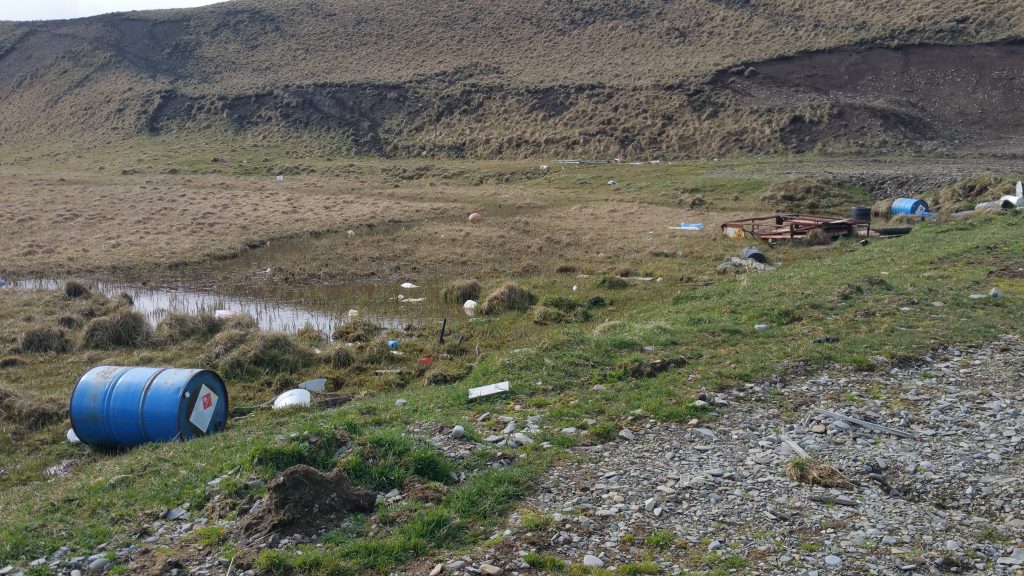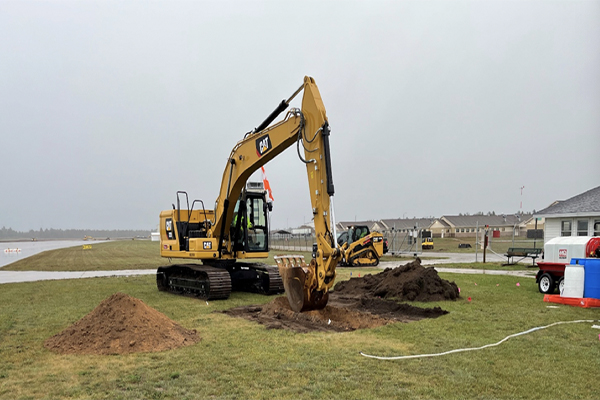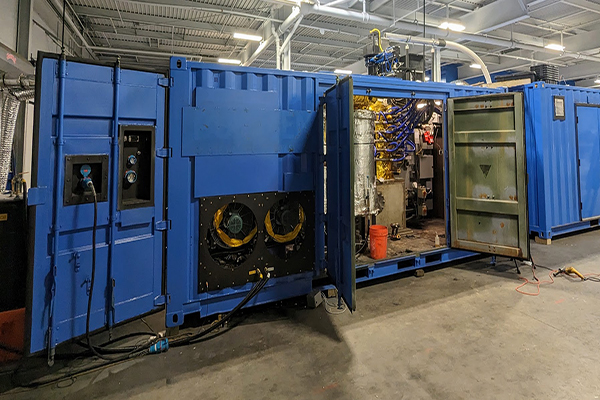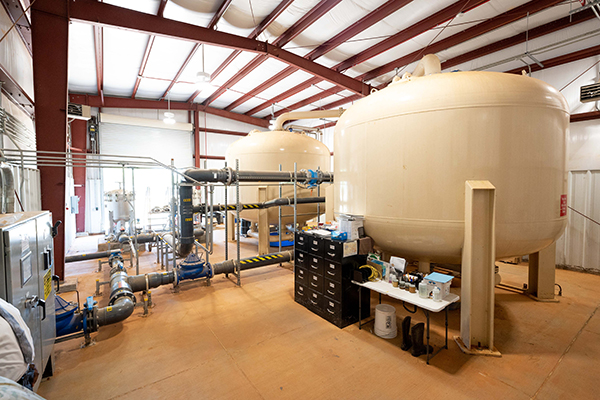By Mike Wolterbeek
The Arctic is contaminated by persistent organic pollutants from many sources, including abandoned defense sites. As the climate warms, toxic substances that had been bound in frozen soils may become more mobile and enter the food web, potentially increasing human health risks from exposure. Scientists at the University of Nevada, Reno are leading an effort to understand the potential for human exposure to toxic substances that may persist in the environment from hundreds of Formerly Used Defense Sites in Alaska.
The research team is collaborating closely with the Qawalangin Tribe of Unalaska and the City of Unalaska through a participatory research approach to understand the questions of importance to the community, including the potential risks of human exposure to these pollutants on Unalaska Island. The work is funded by a National Science Foundation grant of $1.6 million for four years.
With leadership of the Qawalangin Tribe as a co-principal investigator of this effort, the team has developed a goal-orientated research project that is interactive, context-based, and pluralistic in order to achieve co-produced knowledge. The process aims to build long-term relationships and facilitate actionable research and results, acknowledging multiple potential paths forward, that will serve as a model for other Arctic communities threatened by pollution from Formerly Used Defense Sites.

PROTECTING HUMAN HEALTH
Sustaining healthy subsistence food sources for Arctic residence requires full understanding about toxicants and food sovereignty, food security, and cultural health and well-being tradeoffs for Indigenous groups. Anecdotal information suggests that although geographic knowledge of legacy defense sites may be well understood, opinions of local communities regarding the associated health risks have not been well incorporated into the decision-making framework for the remediation of polluted lands.
This project’s research approach is aimed to be applicable to hundreds of vulnerable communities affected throughout the Arctic. Thousands of Formerly Used Defense Sites are scattered throughout the region, many of which are within or adjacent to Indigenous communities. As such, the results generated through this research have the potential to inform management, project and data sovereignty, and remediation efforts at other locations. The effort aims to reduce the health hazards faced by local populations while also promoting safe subsistence harvests.
The focus on Unalaska as a community that is taking a proactive approach to the management of Formerly Used Defense Sites will likely motivate and guide other communities to be similarly engaged.
COMMUNITY-DRIVEN EFFORT
The project (to be co-developed with the local community to promote the continuation of culturally important subsistence lifestyles, train residents in research and management techniques, and foster proactive and sustainable public health risk management) includes workshops, interviews, and an Environmental Monitoring Academy to collect information and samples for prioritizing community needs. Workshops and interviews will be conducted to identify research questions that are community-driven, grounded in tribal self-determination, and at a system scale related to sustainable management of the persistent organic pollutants.
Through the creation of the Environmental Monitoring Academy, residents of Unalaska will be trained to provide the skills necessary for environmental mapping, sampling, operation of analytical instruments, and appropriate quality assurance and quality control so that the community gains local capacity for environmental monitoring and management.
The program also will include classroom sessions and field exercises on nutritional benefits of a subsistence diet, sources, and health effects of contaminants. Compensation and college credit will be offered for participants as well.
Workshops were developed through multiple-itinerary revision, extensive discussion with tribe council members, and coordination with the tribe administrator, especially with tribe members participating through the pursuing of research support. Results are shared with the community through multiple channels, including updates in academy/workshop, discussion in council, outreach publications, and more.
A series of five workshops will be held in Unalaska across the four years, with two held in the first year and one in each of the following years. Each workshop will provide a trust-building opportunity and evolve from prior workshops. The intended audience is Unalaska residents potentially affected by the former defense sites, those who harvest resources locally, and those who express interests in the topic.
Workshop students will collect and analyze environmental samples that are critical for comprehensive understanding of the former defense site pollution. To track broader impacts, the team will administer questionnaires at the end of workshops and academies to assess the extent to which the community is gaining tools and information to address issues surrounding the pollution.
Listening sessions, based on traditional talking circles, will be used to document local perspectives, effects, and interests in contaminants and the proposed research. This approach encourages people to share openly and in a format of their choice, such as storytelling. Participants also will be asked if they have locations where they would like to see environmental monitoring for contaminants undertaken.
ACTIONABLE SCIENCE
A community-based participatory research approach fosters effective conversations on land-based resource issues for communities that aim to overcome challenging environmental, social, and economic issues. Resulting co-produced research products will document a shared language among those affected.
Expected results are intended to deliver actionable science for Arctic residents to manage human exposure to pollutants. Additionally, the results will inform management and remediation efforts at the Formerly Used Defense Sites, providing knowledge to make informed decisions about local resources and minimize health hazards faced by the Unalaska community.
COLLBORATION ACROSS DISCIPLINES
The project in Unalaska includes the disciplines of environmental chemistry, ecotoxicology and social-economic sciences to
investigate pollution at this Arctic site as it experiences rapid warming due to global climate change.
The multi-disciplined team includes Frank von Hippel from the University of Arizona, who is conducting an ecotoxicity study of the leftover pollutants; Jennifer Schmidt from the University of Alaska Anchorage, who is conducting workshops, interviews, and mapping; Tobias Schwoerer of the University of Alaska Fairbanks, who is conducting an economic analysis for potential remediation or mitigation; and Chris Price, Chandra Poe, and Elise Contreras from the Qawalangin Tribe of Unalaska, who are coordinating research with Tribe and local stakeholders and guiding the team on Tribal priorities.
“We are going to look for exactly what’s left over there and see how these chemicals are transported through the environment in response to climate change,” said Frank Yang, project lead and environmental engineering professor at the University of Nevada, Reno. “When the sites are warming up, more toxicants can be released into the environment. The big question is where to hunt and fish for best practice to protect their health.”
“It might be low concentrations entering the environment, which can be accumulated and concentrated in animal tissues,” Yang added. “At some locations, toxicants are found in fish and shellfish, important food sources for coastal Alaskan communities. Ultimately, we want to determine which sites are polluted and how they can be mitigated.”
More News from TME
-

Eliminating PFAS Leaching at Camp Grayling
At Camp Grayling, a novel colloidal-activated carbon material was used as a horizontal barrier on a site where aqueous film-forming foam had previously been discharged to prevent PFAS from leaching into groundwater. -

Reaching Sustainability Goals with Waste-to-Energy
The U.S. Army Engineer Research & Development Center’s Construction Engineering Research Laboratory is working to develop small-scale waste-to-energy systems that will advance installation sustainability and waste management. -

Investigating Emerging PFAS Destruction Technologies
Following recent interim guidance from the Department of Defense on how military organizations are to handle the destruction and disposal of PFAS, developing technologies that target the destruction of these forever chemicals hold possibilities for effective and efficient removal.